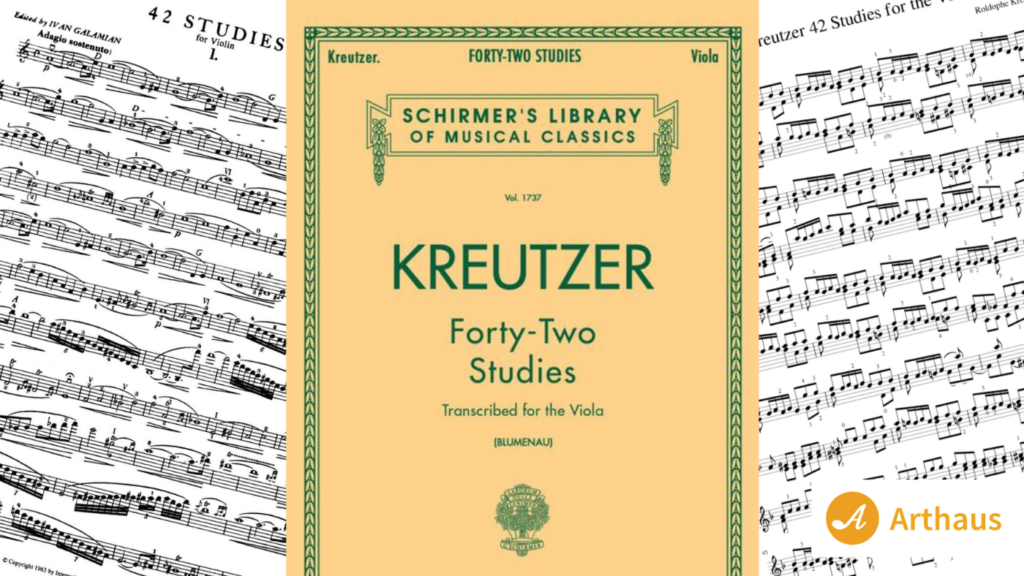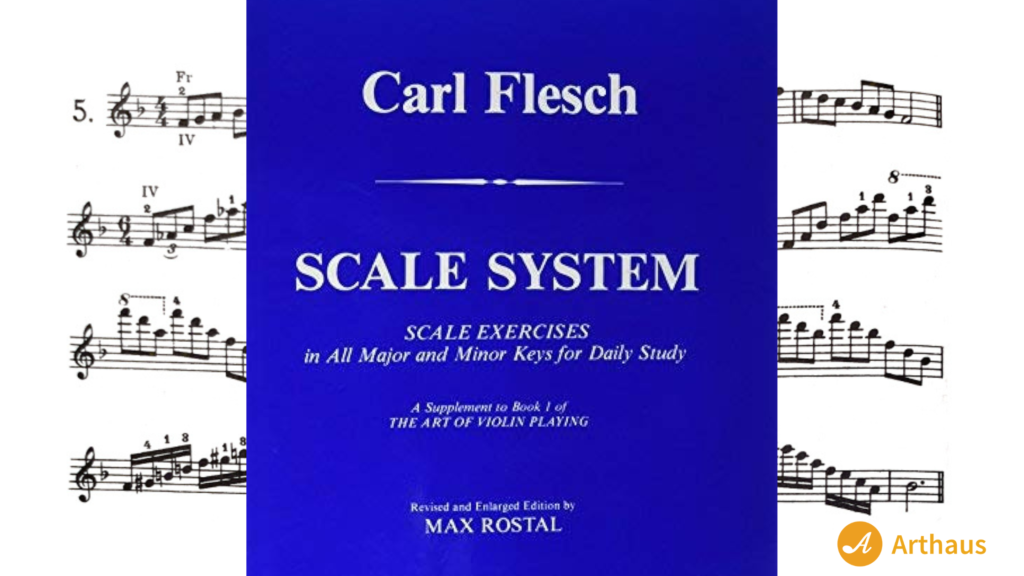Advanced violin methods are undoubtedly the pinnacle of violin learning, a learning process that is always evolving and allows us to rediscover ourselves as performers by perfecting our technique with various studies and exercises.
I like to think that musicians are like athletes, since at some point there is a path to follow and a goal to achieve, just as for athletes it might be winning a world championship or a gold medal.
For us, it may be playing in an orchestra, a soloist, a band, or a musical group, but just like athletes, if we don’t keep up our training, we can easily lose that spot.
That’s why we must continue practicing, training, and working to become a little better every day, to better understand our instruments and our musicality, which, at the end of the day, will be what sets us apart from the rest.
Remember, this is the final part of a four-part series on violin methods for all types of students. If you’d like to see them all, you can visit our free online violin course.
But before we get into these methods that will be with you for a while, let’s define what we consider an advanced violin student.
Am I an Advanced Violin Student?
Advanced violin students can be anyone who can play scales in 3 and 4 octaves, can play almost all positions, have mastered sound projection, and are beginning to take their first steps in learning the violin’s double and triple strings, as well as chords.
I can’t say a specific number of years because that varies depending on the amount of time you’ve spent practicing the instrument and your level of progress over those years.
In that sense, if you can play any of the exercises named in the violin methods for intermediate students, you are surely ready to start with these violin methods for advanced students.
Learn the Most Advanced Violin Techniques with These Methods
1. Kreutzer – 42 studies

Without a doubt, this book is the foundation for all advanced violin techniques. Well-known among violinists for its N2 study, but also for its variety of works and techniques worthy of a professional violinist.
Complex position changes and work in different keys make this a very complete book for those looking to develop their violin technique.
I remember a teacher who always recommended that I practice study No. 7 from this book before starting to prepare Bach’s Partita No. 3 for solo violin since the difficulties were very similar and the tonality was the same (E Major).
It’s not a book you work on once; I think it’s a reference for professionals, something they can refer to whenever they want to perfect a particular skill.
We can consider it a bedside manual, a book we can constantly consult, with the peculiarity that each study can take weeks of work, so don’t think you can finish this book in a year or two.
It is one of the few books that we can work on for a long time, as its difficulty increases, but to a degree very close to that of a consecrated violin professional.
From Kayser to Kreutzer
We already mentioned this in the previous article, but it’s worth refreshing your memory. Although the authors are unrelated, Kreutzer is a good violin method as a follow-up to Kayser, who also has his preparatory method.
That is to say, if we focus only on Kayser and Kreutzer, we already have the foundation of studies to evolve and advance our technique year after year.
Here are the links to download or purchase the Kreutzer violin method:
Kreutzer Violin Method – 42 free PRD studies
Kreutzer Violin Method – 42 Studies on Amazon USA
2. Sevcik (Op 8 and 9)

We’ve already reviewed Sevcik for intermediate violin students, so when you come across these new books you’ll immediately understand their dynamics.
Op 8 Book 1
Op 8 works with position change at a very granular level, meaning it dissects each change and puts them in perfect order to be executed systematically, from the simplest to the most complex.
But by always having the same motif or sequence we quickly get used to its sound and the more complex positions, such as the 4th onwards, do not become so difficult to handle.
Op 9 Book 1
For its part, Op 9 works with double strings, all kinds of combinations, whether 3rds, 4ths, 6ths, 8ths, etc.
This is undoubtedly the basis of the most complex violin works, where the instrument ceases to be merely melodic and becomes a harmonic instrument because we are generating more than one melody at the same time.
Virtuosity like Paganini’s 24 caprices is riddled with octaves, thirds, and sixths, meaning that by mastering this book by Sevcik we can begin to think that these unattainable violin works are closer than we think.
Here are the links to download or purchase the Sevcik violin method Op 8:
Sevcik Op. 8 Book 1 for violin in free PDF format
Sevcik Op 8 Book 1 for Violin on Amazon USA
Here are the links to download or purchase the Sevcik violin method Op 9:
Sevcik Violin Method Op 9 in free PDF
Sevcik Violin Method Op 9 on Amazon USA
3. Carl Flesch – Scale System

Almost in the same vein as Sevcik, with a systematic method, Carl Flesch created a book that contains everything you need to master any scale in any key.
That’s what the book is based on. Mr. Flesch wrote all the scales (all the major and minor keys) with their variations for different strings, in as many octaves as you can think of, and with progressively achievable difficulties.
The scale system allows you to master that tonality like Master Yoda masters the Force. I assure you, no Dark Vader will be able to defeat you.
My advice with these scales is to practice one key first and master it from beginning to end, perhaps the key of the piece you’re currently playing. If you don’t have a preferred key, you can start with G Major.
You can then experiment with other shades, but just like with the Kreutzer method, the Flesh method can be something you refer to from time to time. It’s not necessary to plan on using all the shades Flesh suggests.
In my case, I memorized the ones that I felt contributed the most to my technique, and every time I started practicing for a concert, I would take the tonality of the pieces I was playing and do a sort of “warm-up” using Flesh’s scales.
Here are the links to download or purchase the Flesch scaling system:
Flesch scale system in free PDF
Flesch Scale System on Amazon USA
4. Extra, even more advanced methods
If you’ve already passed the Kreutzer, your next opponent is Dont, where the studies become virtuoso works that you can play perfectly in a concert.
They are even used as an “encore” at the end of concerts to demonstrate the violinist’s skills.
There’s no doubt that at this point your level of professionalism is high, and I even dare say that you could perfectly aspire to join a local orchestra in your city or country because you already have everything it takes to be considered a professional.
Secondly, we bring Fiorillo, a method that at first does not seem so complex, but as we advance in the exercises/works that it presents, we have very well-differentiated difficulties such as:
- Chords
- Trills for fast notes
- Double strings
- Different bow strokes
- Figures of any type and combination
- and all the possible complexities you can imagine
Here are the links to download or purchase Dont’s studies and caprices:
24 Studies and Caprices by Dont for Violin in Free PDF Format
Don’t’s 24 Studies and Caprices for Violin on Amazon USA
Here are the links to download or purchase Fiorillo’s studies and caprices:
36 Studies and Caprices by Fiorillo for Violin in Free PDF Format
Fiorillo’s 36 Studies and Caprices for Violin on Amazon USA
I invite you to “destroy” the studies
What we need to understand as violinists is that studies are meant to be destroyed, bored to death while perfecting different techniques.
This way, when we get around to playing that piece we love so much, we’ll already have the tools to tackle it and we’ll be able to enjoy it to the fullest.
But on the contrary, if we take the opposite path and try to play the work first and the study works as a complement, we will “burnout” the work, that is, play it so many times because we cannot resolve the difficulties.
That’s going to make you bored with the piece you loved so much, when in reality we really wanted to be able to play it well.
That’s why I always recommend my students work on difficult studies and not on pieces because pieces are like desserts. We don’t want to start eating dessert before lunch, but we want to leave it for the end to enjoy it to the fullest and look forward to it throughout lunch.
This is how we should approach our studies, working tirelessly just to master the skill we want and then demonstrate that skill in the work we like most.
We hope this series of articles has been helpful and we look forward to seeing you again soon 🙂

